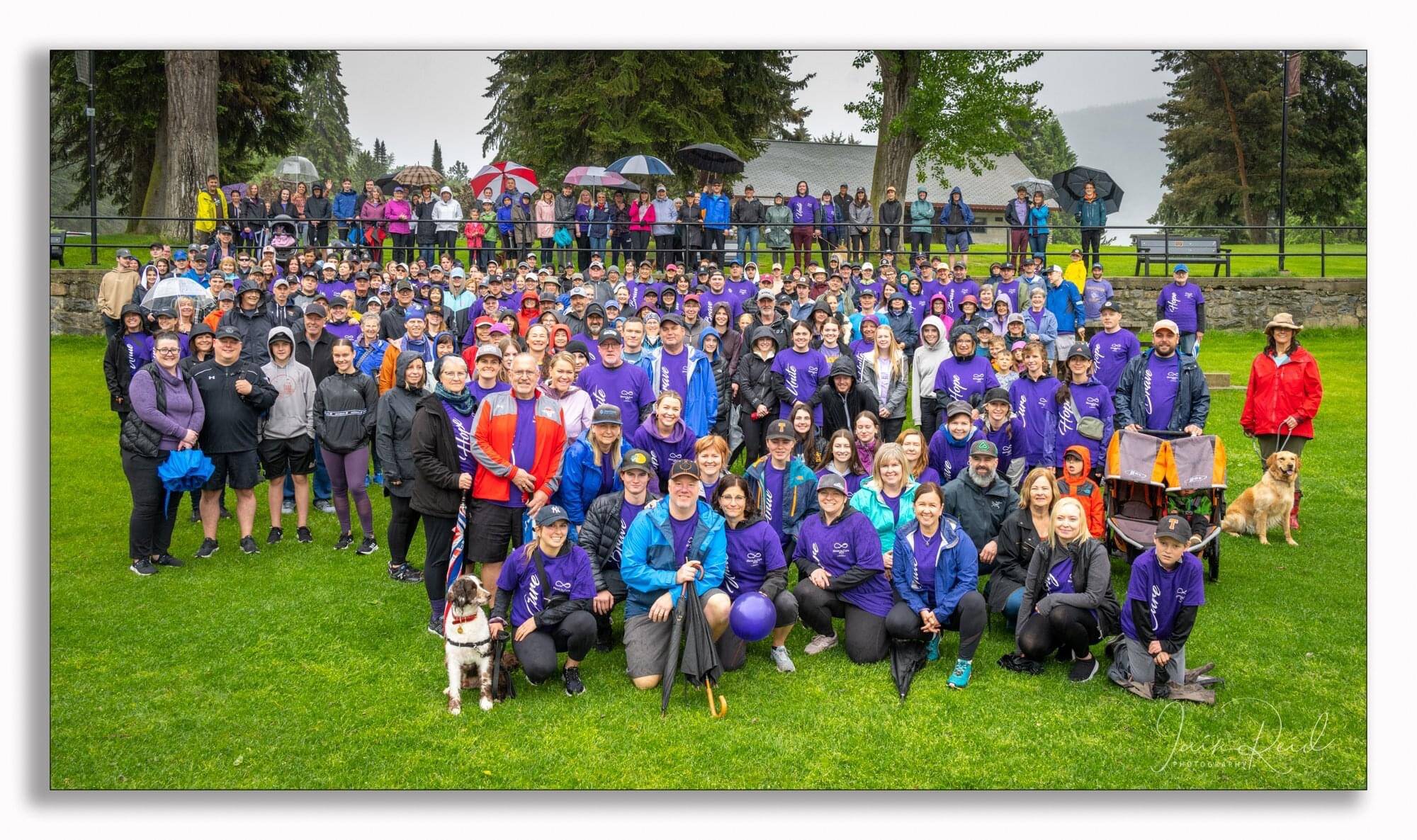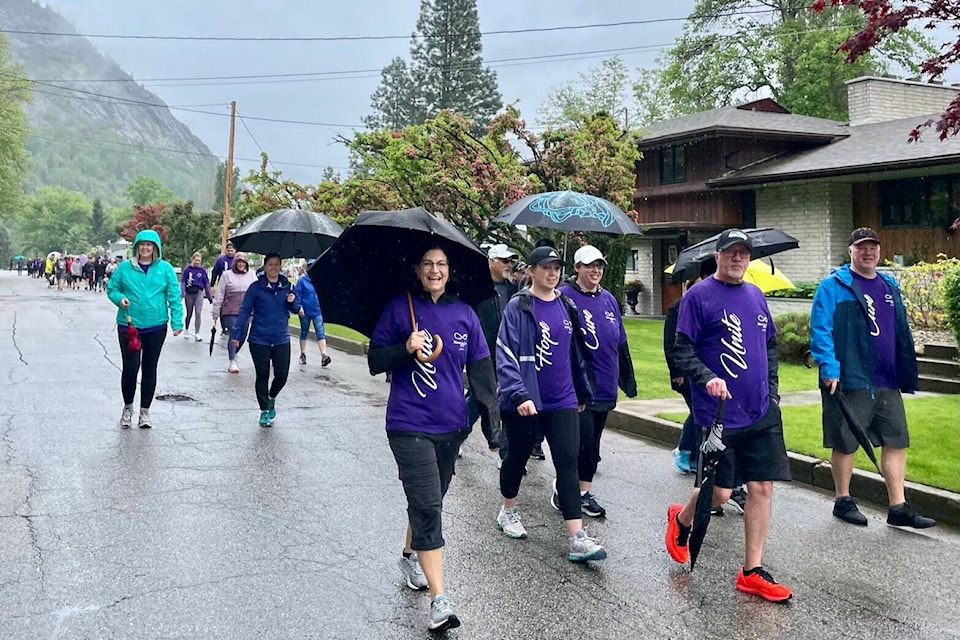In a wonderful show of community spirit and support for “Move with Aladina,” a groundswell of locals turned up Sunday at Gyro Park to raise funds for “Move to Cure ALS.”
Over 300 people came out in the rain to put words to action for Aladina Sheets, a friend to many in the Trail area, as she was diagnosed with ALS last month.
By the time the walk around the Sunningdale loop was finished that morning by supporters wearing purple “Team Aladina” T-shirts, the local event raised just over $20,000 for the BC ALS Society.

Notably, 100 per cent of proceeds from “Move to Cure ALS” remain in B.C. to support patient services programs (60 per cent) and research (40 per cent) through Project Hope.
June is dedicated to raising awareness and funding for Amyotrophic Lateral Sclerosis, or ALS for short.
ALS is often called Lou Gehrig’s disease, after the baseball player who was diagnosed with ALS in on his 36 birthday in June 1939.
The disease is progressive, affecting nerve cells in the brain and spinal cord, causing loss of muscle control.
Over time, as the muscles of the body break down, the person living with ALS will lose the ability to walk, talk, eat, swallow, and eventually breathe.
Currently, there is no cure for ALS.
Potential early symptoms — what the person may experience or feel — include: weakness; fatigue; muscle cramping or twitching; muscle stiffness and/or rigidity.
Potential early signs — what can be seen or measured — include: tripping; dropping things; slurred or “thick” speech; difficulty swallowing; weight loss; decreased muscle tone; shortness of breath; increased or decreased reflexes; and uncontrollable periods of laughing or crying.
While pain is not commonly reported by people living with ALS, some people experience physical pain, joint discomfort or cramping. Movement exercises and keeping warm can help alleviate the feelings of pain. Medication may also be needed in some cases.
To learn more visit: ALS.org and ALS.ca.
More about ALS
Descriptions of the disease date back to at least 1824 by Charles Bell. In 1869, the connection between the symptoms and the underlying neurological problems was first described by French neurologist Jean-Martin Charcot, who in 1874 began using the term Amyotrophic Lateral Sclerosis.
It became well known in the United States in the 20th century when in 1939 it affected baseball player Lou Gehrig (leading to his death two years later), and later worldwide, following the 1963 diagnosis of then 21 year old cosmologist Stephen Hawking.
However, unlike most individuals with ALS, Hawking managed to survive his illness for another 55 years.
The first ALS gene was discovered in 1993 while the first animal model was developed in 1994.
In 2014, videos of the Ice Bucket Challenge went viral on the Internet and increased public awareness of the condition.
Read more: Downtown businesses take ALS ice bucket challenge
Read more: ALS Awareness Month: Society campaigns to make Canada No. 1 for clinical trials
newsroom@trailtimes.ca
Like us on Facebook and follow us on Twitter
